For many people, visiting Iceland is a dream to become true and that applied to
me too. Last summer that dream became reality. Its fascinating nature speaks to
everyone’s imagination. But there’s not only scenery and flora, but also interesting
fauna, not only wild animals but also domestic animals. The Icelandic horses for
example are world famous and most elegant. You see them everywhere as if every inhabitant
has a whole bunch of them. There is a specific way to ride them and this sport is
extremely popular. Less known is the one and only Icelandic recognised dog breed,
the Icelandic Sheepdog. It is a nice and lovely dog of medium size, with wavy medium
long hair and a very smart expression. It can be compared to the Norwegian Buhund
but with long hair and it comes in more colours. It is not a specific Spitz-type
and not a specific Herding type, but he looks more like an allround companion, smart
and capable of fulfilling 1000 tasks with ease, from herding sheep and horses, guarding
the farm and protecting the family, killing rats and accompany fishermen as well
as hunters. He is swift and alert. I suppose it can be noisy if not trained correctly
but on the other hand I have the impression that it doesn’t need much training as
it is very smart and fast learning.
© Karl DONVIL
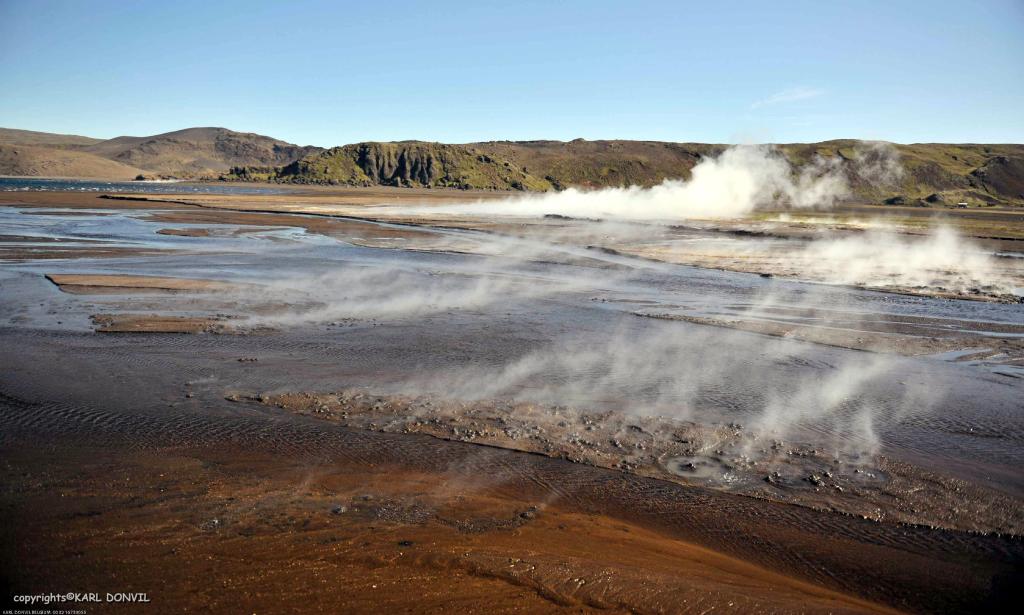
I decided to combine my visit, not only to see the magnificent scenery of this country,
but also to learn more about Iceland’s Cynology, as since 2011 Iceland became a
full member of the FCI. There was a summer dog show in Reykjavik on the last weekend
of my stay and this would give me the opportunity to focus on the native breed that
you don’t see that much abroad but that deserves much more attention.
© Karl DONVIL
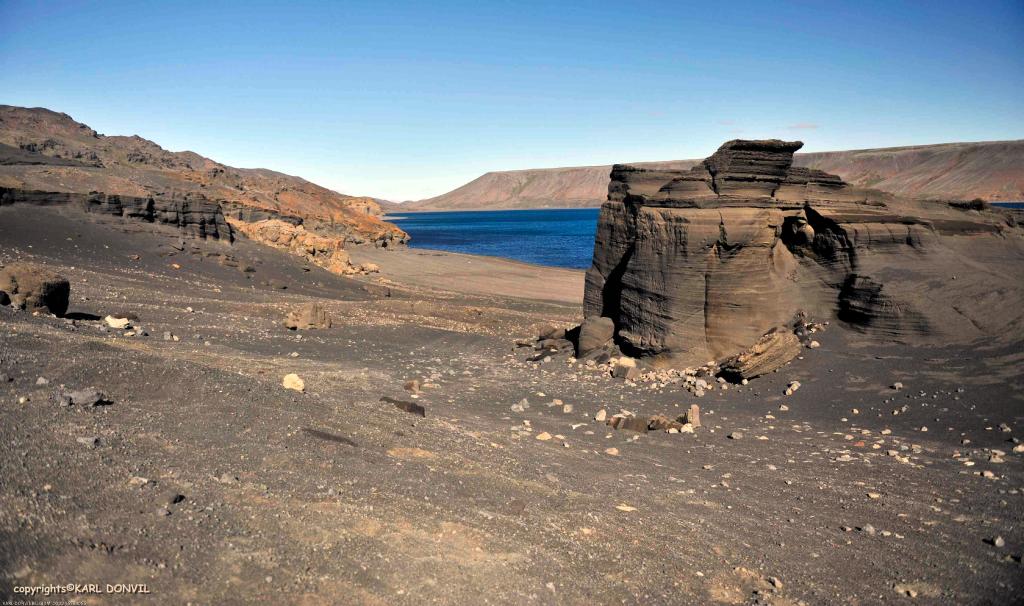
Iceland is a land that can hardly be compared to any other country. It is vast and
the soil can change in 10 meters from frozen Ice to boiling sulfur and steaming
geysers, from old black lava deserts, over black sand on the beaches to deep ravines
and high cliffs. This variety asks for alertness. Dogs need to be clever, fast,
enduring and resistant to the extreme climate. No wonder herding breeds are very
popular and no wonder my hosts, Lara and Björn are breeders of Aussies and Border
Collies. They import top dogs from all over the world and sell regularly the offspring
not only to locals but overseas as well. Dogs have a central place in their lives
and I really think it is in a different way. Living on an Island cannot be compared
to living on the continent and being able to travel thousands of miles with a car
from show to show and country to country. In Iceland, notwithstanding its vastness,
people live in a much closer community. Everybody knows everybody and no glacier
stands in between. This makes breeding not so obvious. Getting known abroad as a
breeder is not easy at all. That implies that breeders sell mostly to homes on the
island. Fortunately with the modern communication facilities and cheap flights it
becomes somewhat easier to sell puppies to the continent. For a long time there
has been an American Airbase and probably they imported several dogs to Iceland
and the good connections with the Scandinavian countries has helped a lot too. But
still, breeding and finding homes is not as obvious as we think here on the continent,
keeping in mind that Iceland has only 328,000 inhabitants. But Icelanders love pets
and enjoy their company. There is enough space and no problem to keep them. If one
takes a dog, one tends to go to a dog school as if it was the most normal thing
in the world. It is standard procedure. There are courses in Nutrition, there is
puppy training, ring training any training we have abroad, but the difference is
that people are so passionate to learn. They take it really serious. There are several
dog schools in and around the capital of Reykjavik where 80% of the people live.
Lara and Bjorn run one of them in a rented horse-paddock. They invited me to attend
the classes. All students are in time and nobody comes late. First there is a lesson
in Icelandic. I could not understand a word of it but this allowed me to better
observe everything. The whole family is involved and concerned, mom and dad and
the children. It is a social happening and they visibly enjoy it. The children too
can participate, ask questions etc. Due to the long winters people probably are
living in a much closer relation to each other and social live is much more important
and a way to survive the hostile environment and break the isolation. I can hardly
imagine this in Belgium. After 20 minutes we moved to the paddock and dog training
starts. Bjorn is a professional dog trainer and has been trained in the United Kingdom.
Lara is a trainer too and takes over regularly from Bjorn. I am amused by the pupils
as in 5 days there is one if the 4 big shows in Iceland. There is some stress, not
because I am there but much more for the upcoming show. They take it serious and
want to present their dog correctly. There is no way to visit a show every weekend
like we can do on the continent. No wonder a show is extremely important for them.
It is hard to describe, but the difference is immense. It is not only one of the
4 occasions to beat your competitor and win a title, it is much more a way of being
part of it. Winning or losing is not that important. Participating is giving volume
to the Kennel Club, to the show, to the sport. It is a social happening in the first
place.
© Karl DONVIL
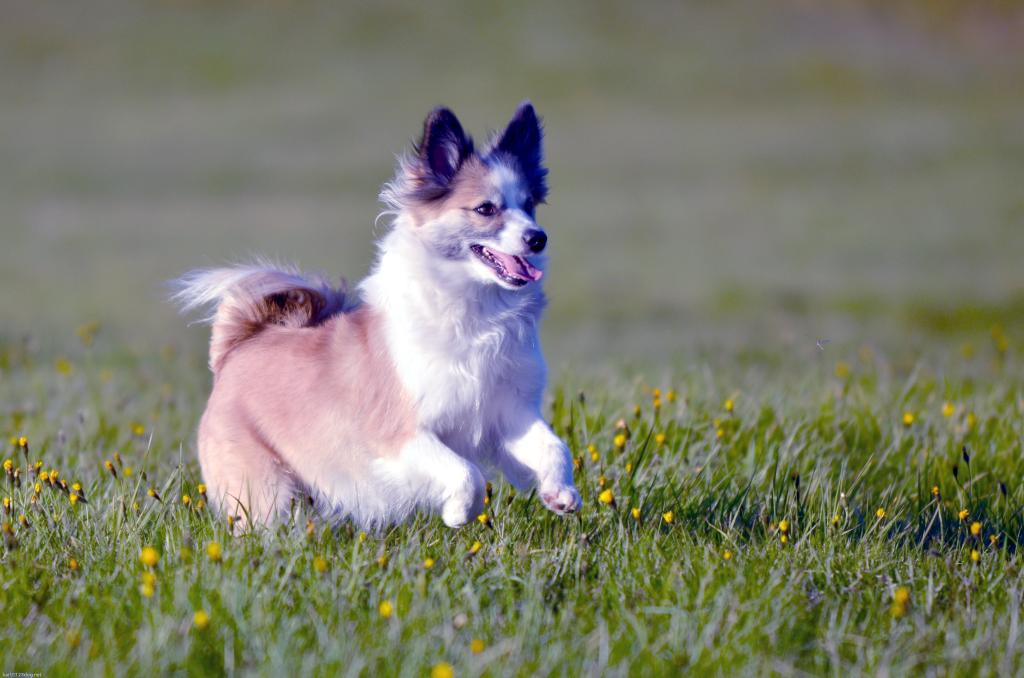
The next day it is show training in the paddock and I enjoy again watching. Suddenly
Lara asks me to judge the handling and even has brought some rosettes to make it
look more real. Fun for me as I am not a judge and as this is only meant for training.
Of course by experience I know what to look at in show training. But the pupils
take it very serious and I am forced to change my attitude and take it more seriously,
like a general rehearsal of a play. When I hand over the rosettes to my winners
they a leap in the air as if they won a huge competition and they congratulate each
other wholeheartedly.
© Karl DONVIL
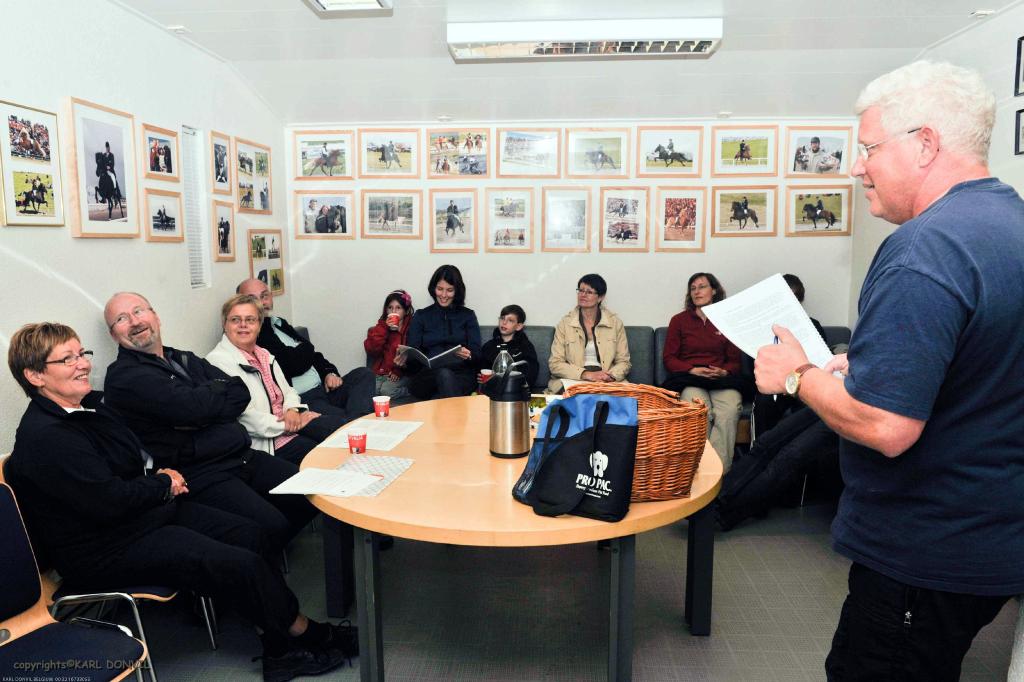
I also payed a visit at the offices of the Icelandic Kennel Club. It is a nice place
with a reception and some open offices where 4 people are working. Most visitors
tend to jump in to have a chat as if it is their clubhouse.
© Karl DONVIL
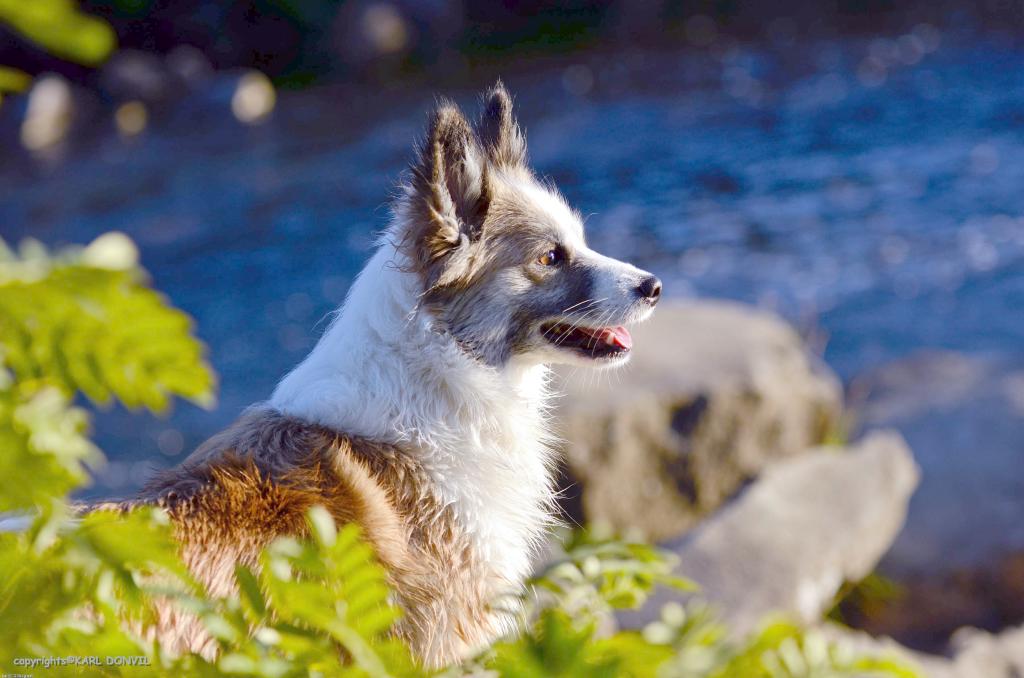
On Friday Lara and Bjorn dropped me at a breeder of Icelandic Sheepdogs. The dogs
are part of the family here and it is clear that the dogs have changed their family
life and became the family hobby. The daughter is one of the top handlers in Iceland
and her boyfriend is involved in dogs and a handler too. After the photo shoot at
the nearby river we all went to the halls where the show is going to take place.
The daughter and her boyfriend already left. On arrival I saw that they were not
going to work inside the halls to prepare the show, no, on the park place in front
of the halls there is much activity. At first I thought there was some kind of club
show going on, but after a while I understood that Junior handlers share their experience
with newcomers, teaching them how to show their dogs, giving advice on do’s and
don’ts, it’s a final rehearsal before the show of next day. Strange and a pleasant
surprise, so much friendship and understanding, no rivalry, no hatred no envy… everyone
helps everyone to give the best possible performance next day at the show. This
is the essence of showing what we see here: presenting your dog to a judge and appreciate
his opinion and critique. This has nothing to do with defeating opponents as all
the opponents are friends. Of course winning is part of the game but the joy of
the victories are shared by all. Judges are invited to criticise the quality of
the dogs (read “dogs of the community”). Having good quality in dogs is common interest.
There is no need to defeat friends and corruption has no reason here (as far as
I feel). I must admit this was a shock to me and reminded me on my naive start when
my Great Dane won its first cup, a souvenir in fact, given to every “very good”.
Who would be happy now with a “very good”? But here it has nothing to do with naivety,
this has to do with national pride, with the Icelandic Kennel Club where every self-respecting
local dog fancier stands behind. They invite judges from abroad to qualify the Kennel
Club and the national level of breeding as a whole. They want to show the best they
have in the country and want to find out if their dogs can compete with the dogs
on the continent.
© Karl DONVIL
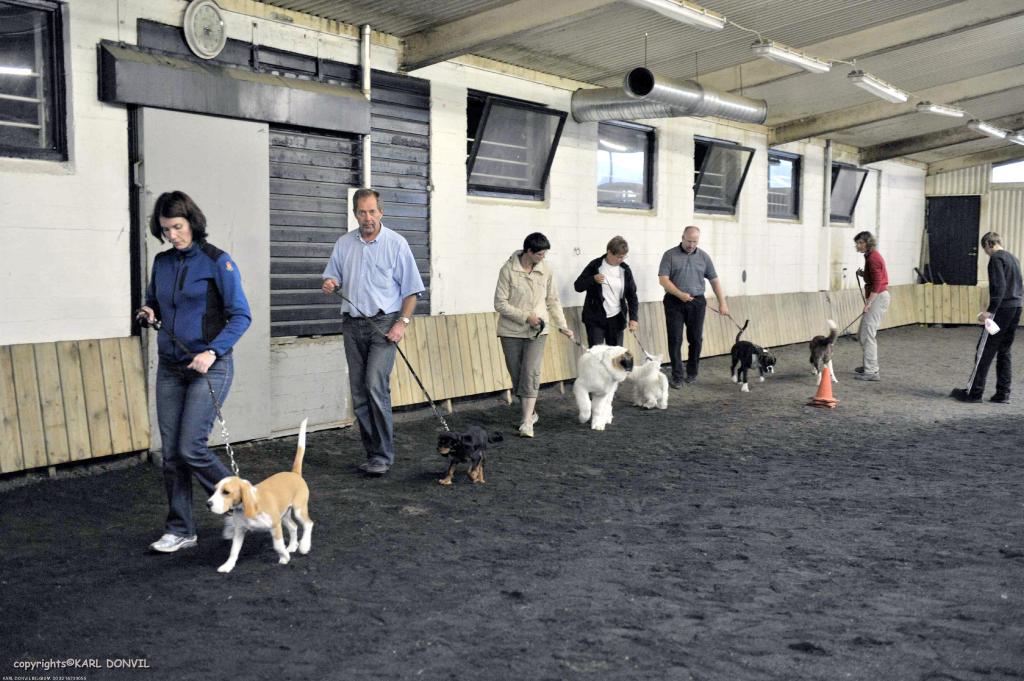
At Lara and Bjorn’s place it is very hectic. Friends jump in to have their dogs
prepared or to help grooming the dogs. This is also part of the fun. The dogs are
groomed and washed the day before the show, everything needs to be prepared, including
the show outfit of the handlers themselves. It is like if tomorrow it’s Christmas
or Eastern. Due to the quarantine rule, there is no opportunity to participate on
shows other than those organised in Iceland. That is what it makes them all so special.
We, on the continent, are spoiled and don’t realise the luxury we have. We can compete
every weekend in up to two shows.
© Karl DONVIL
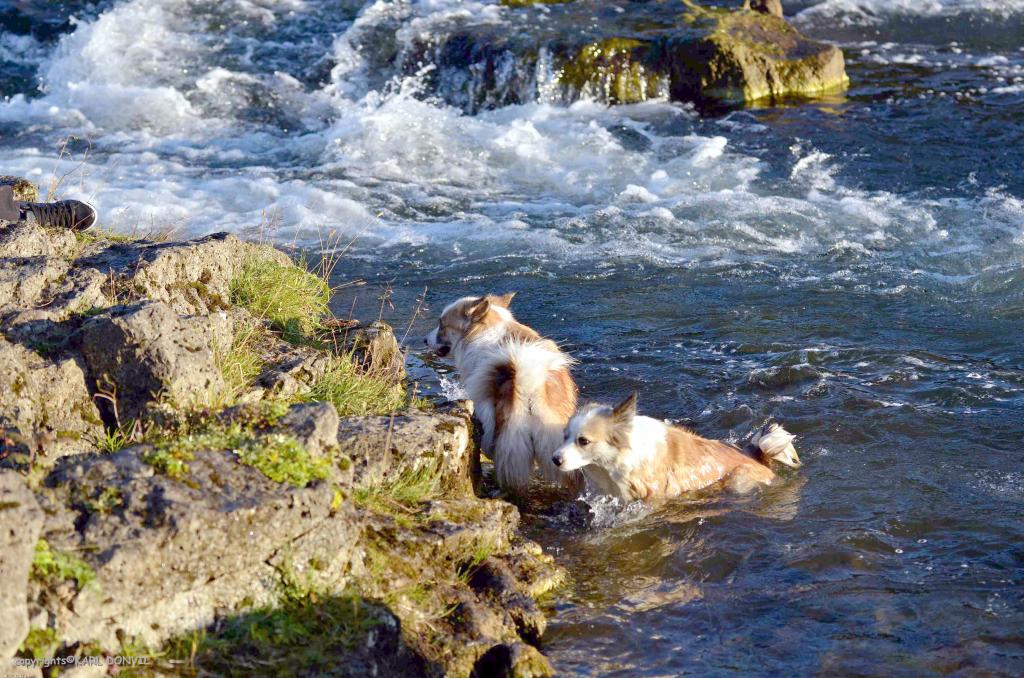
The halls are very nice with four big rings and stairs for the public on one side.
There are a few trade stands in the hallway and a grooming area. There is a lot
of public interest, although there are no demonstrations or other competitions like
Fly ball or Agility. 5 Judges were invited, Mrs Van Brempt and Mr Decuyper from
Belgium, Mr Carlos Fernandes-Renau from Spain, Mr Per Iversen from Norway, Mrs Kornelija
Butrimova from Lithuania. Of course all judges must be able to judge several breeds
as there is no budget to invite a judge for one or a few breeds. The level of showing
is very high and the quality of the dogs is surprisingly high. I was also impressed
by the variety of breeds. Popular breeds are of course the Border Collie and its
nephew the Australian Shepherd. But some breeds are really popular like the Labrador
with 40 specimens, Golden Retriever with 22, German Shepherd with 34 specimens and
the American Cocker with 27. I was very surprised to find no less than 36 Papillons,
more than the 23 Chihuahua’s and the 39 Cavaliers and the 16 Shih Tzus, breeds that
are popular everywhere. The Schnauzers were 59 all varieties and colours included
and that is rather unusual too compared to the total number of entries. The best
scoring breed was the Siberian Husky. Mr Jos Decuyper had more Siberian Huskies
here than he had two weeks later at the European Dog Show in Leeuwarden. I focused
on the national breed as one has no often an occasion to find 41 specimens together
and to compare. Mrs Van Brempt was asked to judge them and she did very well as
I have been sitting next to the former chairman of the Icelandic Sheepdog club and
I can assure you he was pretty sceptical. At the end of the judging I asked him
if the judge did a good choice. He assured me that he would have placed almost the
very same dogs. The Icelandic Sheepdogs are lovely dogs and deserve to be more popular.
They are very familiar to the Norwegian Buhund and the Norwegian Lundehund. Some
have also 6 toes and they must have double claws on the hind legs. It is a very
playful and alert breed and I’m sure he must be very versatile and capable to perform
well in many disciplines. The breed comes in several colours and I was pleased that
there were so many here, which proves the Icelanders are very proud of their national
breed, the only native breed they have.
© Karl DONVIL
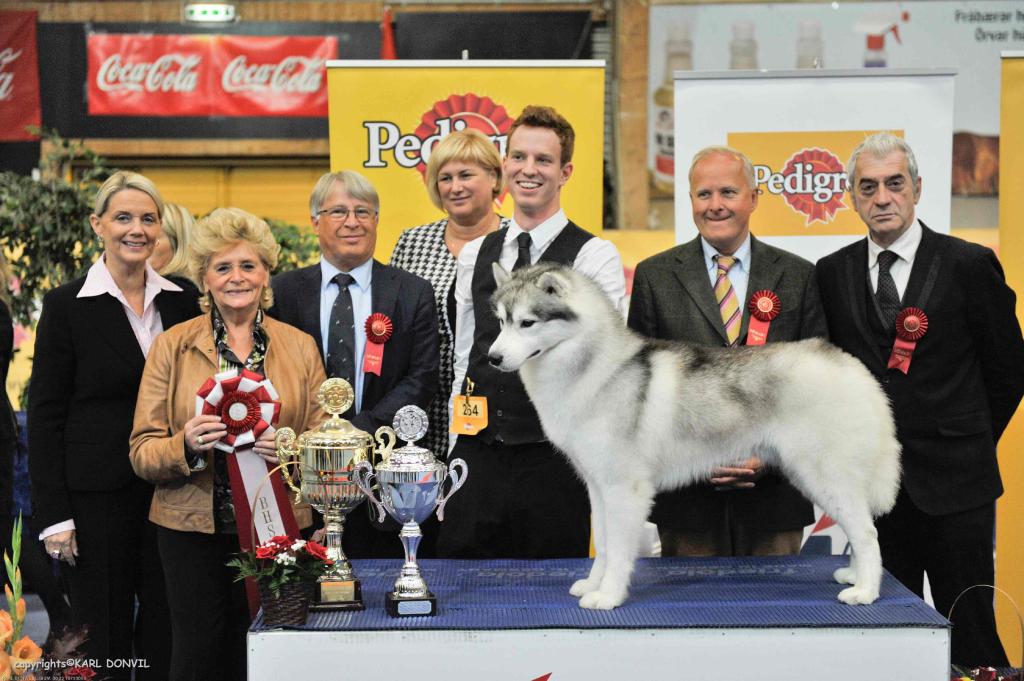
When the main ring starts all rings are united into two, a prejudging ring and the
main ring. There is little difference with what we are used to see in the rest of
the European shows. Here too we see Puppy Class and Junior Class, Couple class and
Breeders Group. I could give you some names of the winning dogs but unfortunately
I suppose they will not be known outside Iceland, although some breeders export
dogs and are successful, and why not, isn’t it? Icelanders import good dogs from
all over the world and just as any breeder on the continent they combine good bloodlines.
And this results now and then in very nice offspring. Unfortunately for the people
of Iceland it is not easy to build up a reputation. The shows are rather small,
breeders and handlers cannot participate on shows in other countries with their
dogs and very few outsiders come over to Iceland to visit shows. But, some are really
ambitious, Iceland has very good handlers and Cynology is taken very serious. All
I can say is, if ever you visit Iceland or make a stopover on your way to the States
or from the States and you are interested in dog shows, take a look at the FCI dog
shows calendar (http://www.fci.be/expositions.aspx) and see
if there is a show, usually they are all in Reykjavik. Or visit the Icelandic Kennel
Club and find out about your favorite breed. And if the Icelandic Sheepdog is your
breed, there is no reason not to stay for a longer period. The people of Iceland
are nice and hospitable and communicating in English is no problem. They know they
live in a fantastic country and don’t mind to share this with their visitors.
© Karl DONVIL
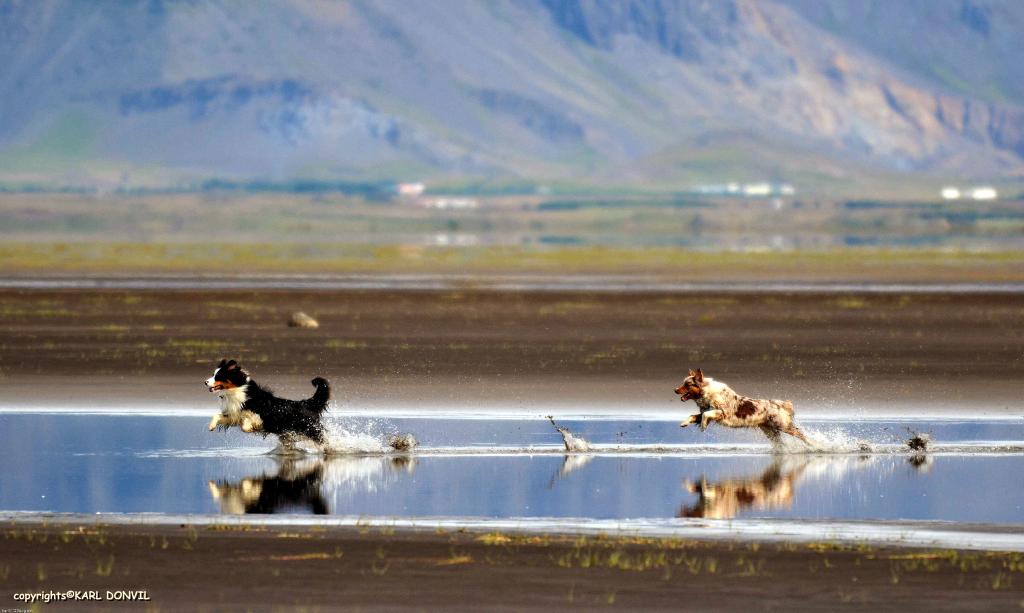
Karl DONVIL